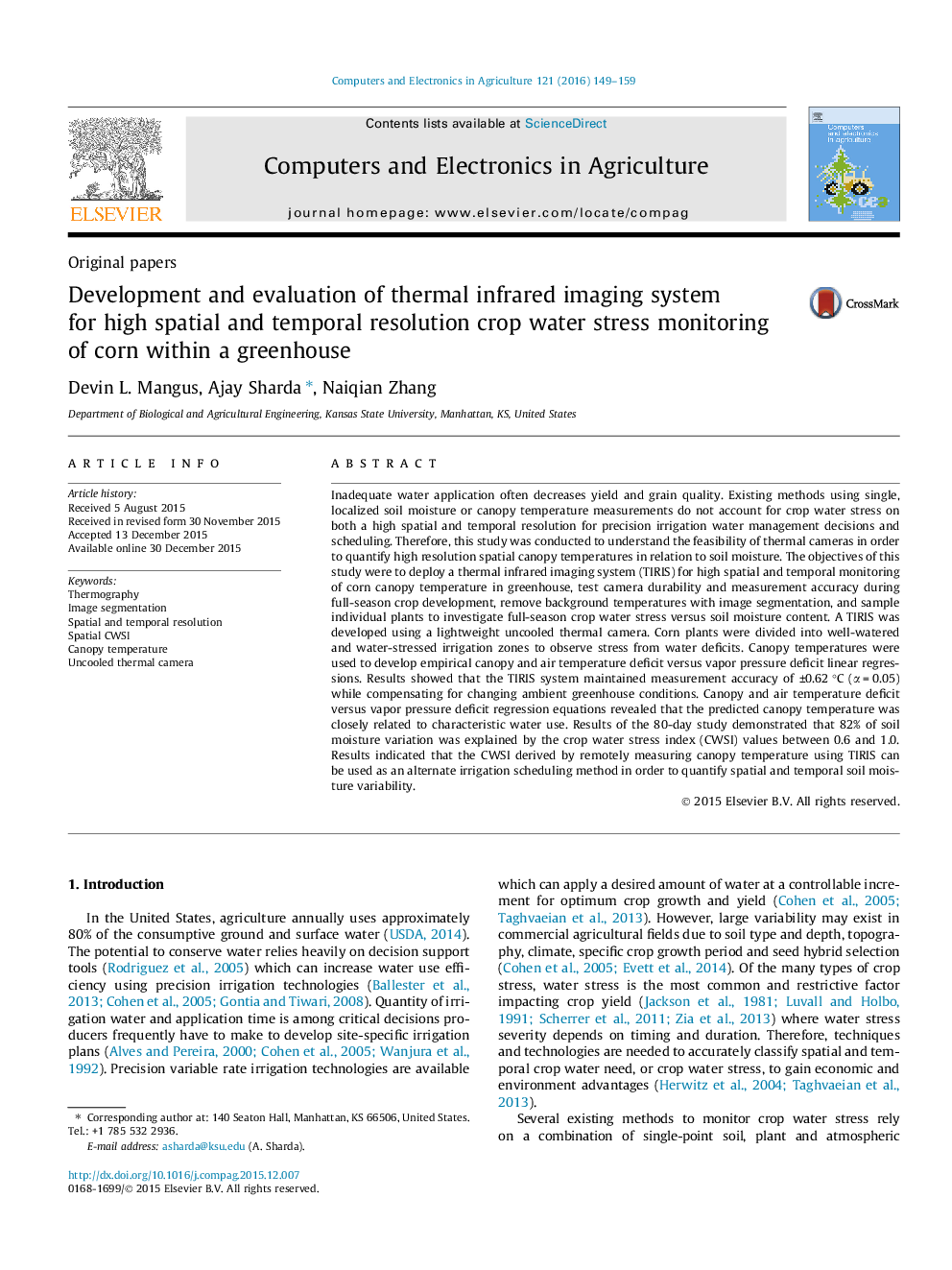| کد مقاله | کد نشریه | سال انتشار | مقاله انگلیسی | نسخه تمام متن |
|---|---|---|---|---|
| 83997 | 158857 | 2016 | 11 صفحه PDF | دانلود رایگان |
• The greenhouse thermal imaging system had a ±0.62 °C (α = 0.05) measurement accuracy.
• Unstressed canopy temperatures followed closely to characteristic crop water use.
• Canopy temperature is a viable water stress indicator throughout growth stages.
• Spatial and temporal canopy temperature provide accurate crop health assessment.
• 82% of soil moisture variation was explained by CWSI values above 0.6.
Inadequate water application often decreases yield and grain quality. Existing methods using single, localized soil moisture or canopy temperature measurements do not account for crop water stress on both a high spatial and temporal resolution for precision irrigation water management decisions and scheduling. Therefore, this study was conducted to understand the feasibility of thermal cameras in order to quantify high resolution spatial canopy temperatures in relation to soil moisture. The objectives of this study were to deploy a thermal infrared imaging system (TIRIS) for high spatial and temporal monitoring of corn canopy temperature in greenhouse, test camera durability and measurement accuracy during full-season crop development, remove background temperatures with image segmentation, and sample individual plants to investigate full-season crop water stress versus soil moisture content. A TIRIS was developed using a lightweight uncooled thermal camera. Corn plants were divided into well-watered and water-stressed irrigation zones to observe stress from water deficits. Canopy temperatures were used to develop empirical canopy and air temperature deficit versus vapor pressure deficit linear regressions. Results showed that the TIRIS system maintained measurement accuracy of ±0.62 °C (α = 0.05) while compensating for changing ambient greenhouse conditions. Canopy and air temperature deficit versus vapor pressure deficit regression equations revealed that the predicted canopy temperature was closely related to characteristic water use. Results of the 80-day study demonstrated that 82% of soil moisture variation was explained by the crop water stress index (CWSI) values between 0.6 and 1.0. Results indicated that the CWSI derived by remotely measuring canopy temperature using TIRIS can be used as an alternate irrigation scheduling method in order to quantify spatial and temporal soil moisture variability.
Journal: Computers and Electronics in Agriculture - Volume 121, February 2016, Pages 149–159
